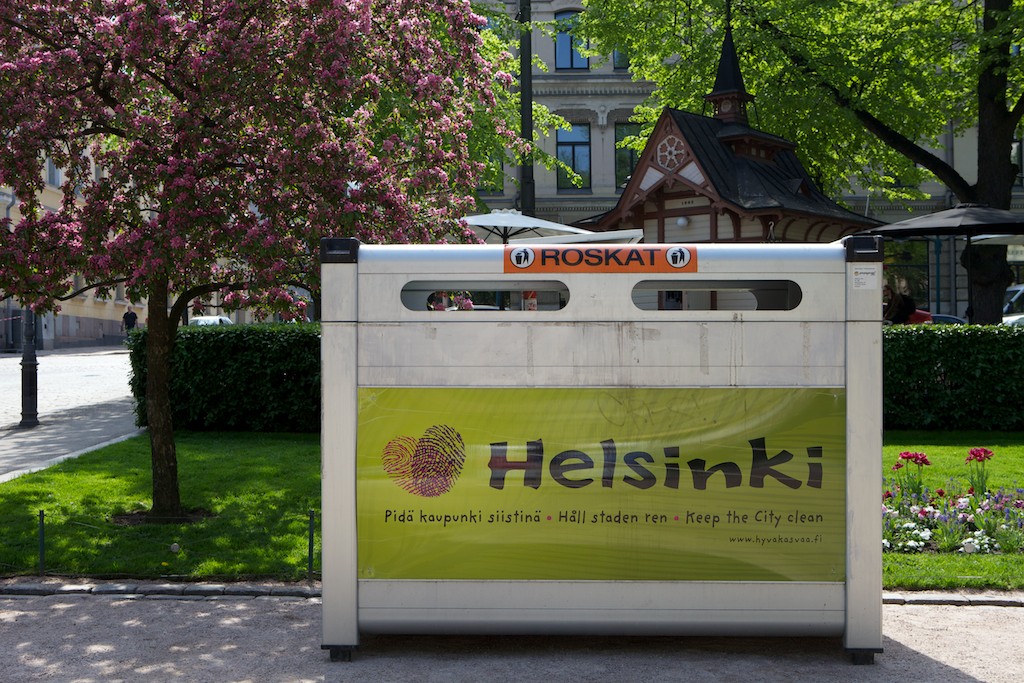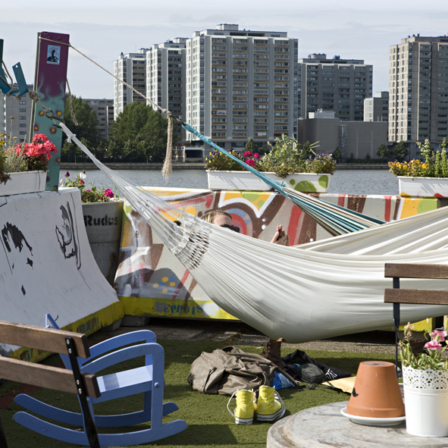Each Finnish person generates an average of 500 kilograms of waste per year, but household waste is just the tip of the iceberg compared to the total amount of waste generated by Finnish society in general. About half of the “iceberg” comprises waste from extractive operations, while one fifth is industrial waste. How on earth, then, can we realise a future in which no waste is taken to landfills?
“We actually think that the word ‘waste’ will fall out of use, because in the future one man’s waste will be another man’s raw material,” says Sitra’s Lead Specialist Jyri Arponen. “Factories and plants will form industrial symbioses for the more efficient exploitation of side streams: this will increase materials circulation and energy savings. Such developments will create new business opportunities for companies in particular, while raising productivity. We have already seen plenty of evidence of this in Finland, and developments of this kind are set to intensify in the future.”
When we envisage a zero-waste society of the future, we mean the creation of a circular economy. In a circular economy, most materials are renewable and those that are not are efficiently recycled and reused by industry in the manufacture of new products. The purpose of a circular economy is to create closed product cycles with the highest possible degree of self-sufficiency.
A few European countries have already managed to significantly reduce the amount of waste disposed at landfills, or to decommission landfills altogether. However, in such countries, incineration is a common waste treatment method. Incineration would not be favoured in a circular economy, in which the goal would be to reuse materials to the highest degree possible.
“Waste incineration generates greenhouse gas emissions, while permanently destroying raw materials that could be reused. The most resource-efficient approach would be to reuse raw materials again and again in order to ensure a sufficient supply of virgin raw materials for meeting the needs of our planet’s growing population, while reducing emissions. That is what resource wisdom is all about,” says Sitra’s Lead Specialist Lari Rajantie.
In Finland, recycling systems for paper and glass are already operating to a high standard, but improvements are needed in the system for recycling metal waste generated by households and disposed of as municipal solid waste. According to Senior Research Scientist Riina Antikainen of the Finnish Environment Institute: “Alloys, textiles and plastic in particular are more difficult to recycle on account of their being heterogeneous materials, but their reuse rate is continuously increasing.”
In the future, the scarcity and rising prices of raw materials will encourage producers to turn to intelligent design and start reusing all the materials at their disposal. In a resource-wise society of the future based on generating zero waste and saving resources, products will be designed with reuse in mind from the very beginning. Eco-design will be the norm, producer responsibility will be extended even further, leasing will gain in popularity, and new sales points will be created around secondary raw materials.
“Zero waste is a challenging goal, because many products are manufactured using components that have been produced in various parts of the world,” says Antikainen. “To achieve such a goal, the zero-waste approach must be applied to the production chain from start to finish, and legislation and product design must be developed in order to create more favourable conditions for recycling. A single set of principles should exist for application on a global basis.”
Perhaps the simplest ways of radically reducing the amount of waste involve reducing domestic material consumption, purchasing more durable products and developing repair services. At the local level, waste reduction would also include introducing better solutions for the formation of company partnerships in order to make better use of side streams, for increasing awareness of existing material resources and for the sorting of materials, and for enhancing opportunities for recycling by businesses and households.




Recommended